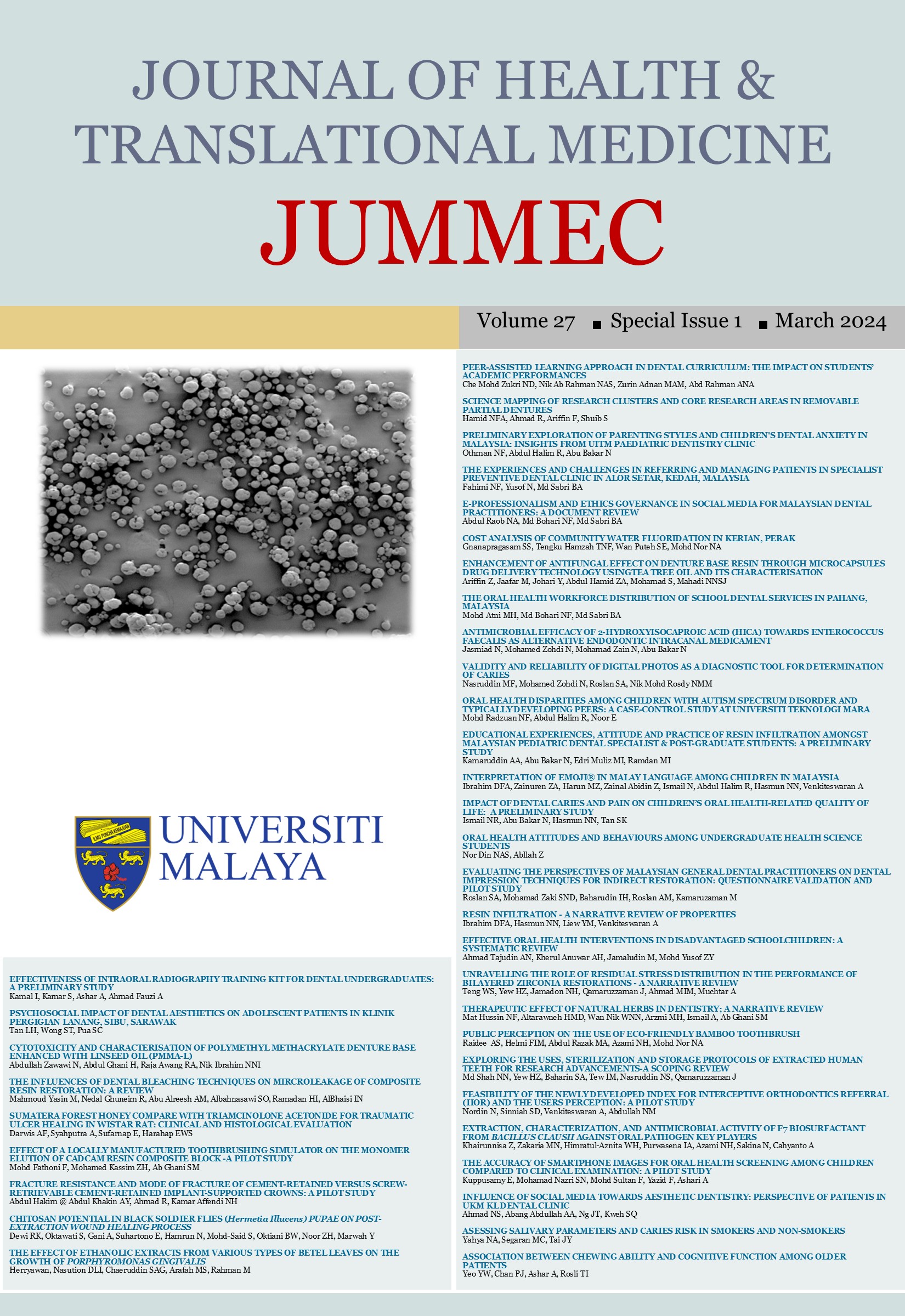EFFECTIVENESS OF INTRAORAL RADIOGRAPHY TRAINING KIT FOR DENTAL UNDERGRADUATES: A PRELIMINARY STUDY
Received 2024-03-01; Accepted 2024-03-29; Published 2024-03-29
DOI:
https://doi.org/10.22452/jummec.sp2024no1.29Abstract
Insufficient intraoral radiography training among dental students may lead to an increased radiograph rejection rate at a dental institution which may require a corrective action plan as suggested by the Malaysian Dental Council. The number of trained staff to provide continuous training among dental students in radiographic taking is usually inadequate in most dental institutions, including UKM. To overcome this problem, the intraoral radiography training kit is potentially useful as a self-directed learning aid that students can access anytime for continuous training in intraoral radiography and hence reduce the rejection rate associated with radiographic taking among dental students. This study is aimed to determine the effectiveness of the intraoral radiography training kit and demonstration videos in radiographic taking among dental undergraduates. This type of study is an experimental (parallel group design) to compare the rejection rate between a group of students who are exposed to the radiography training kit (trial group) and a group of students who are not exposed to the intervention (control group). This study involved a convenient sampling of 10 students within the clinical year (Year 4 and Year 5) who had at least one rejected radiograph at undergraduates' polyclinics from March until July 2022. Results showed the mean rank of the radiograph rejection rate in the trial group was lesser than the control group, following the intervention period. In addition, there is a statistically significant difference between the means of radiograph rejection rate before and after exposure to the intraoral radiography training kit (p-value < 0.05). In conclusion, an intraoral radiography training kit is an efficient tool to facilitate dental undergraduates in improving their radiographic skills.
Downloads
Downloads
Published
Issue
Section
License
All authors agree that the article, if editorially accepted for publication, shall be licensed under the Creative Commons Attribution License 4.0 to allow others to freely access, copy and use research provided the author is correctly attributed, unless otherwise stated. All articles are available online without charge or other barriers to access. However, anyone wishing to reproduce large quantities of an article (250+) should inform the publisher. Any opinion expressed in the articles are those of the authors and do not reflect that of the University of Malaya, 50603 Kuala Lumpur, Malaysia.


